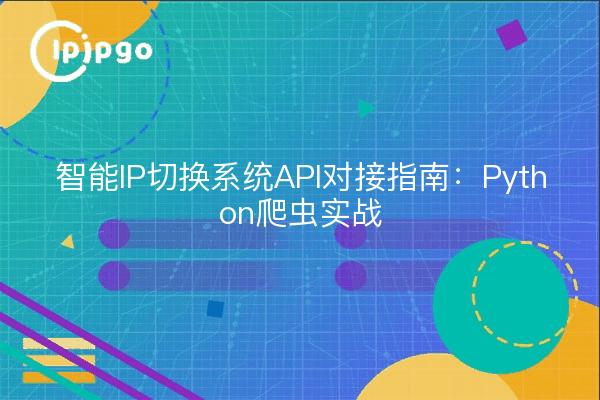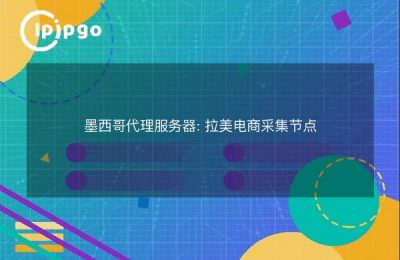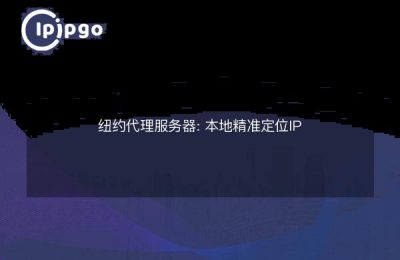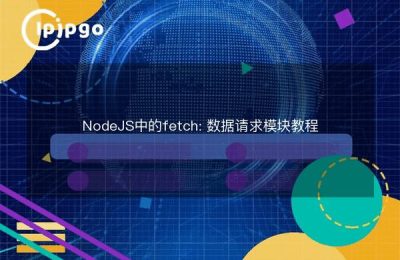
IP switching pain points in real scenarios
When we write crawler programs in Python, we often encounter anti-crawling mechanisms for target websites. One of the most common cases is:Frequent access to a single IP is restricted. This is the time to pass theIntelligent proxy IP switchingto maintain the stability of data collection.
The traditional way of manually changing IPs requires constant modification of code configuration, which affects efficiency and is prone to errors. Take e-commerce price monitoring as an example, when 5000 product pages need to be tracked in real time, using a fixed IP may be blocked within half an hour, resulting in the paralysis of the whole monitoring system.
IPIPGO Solution Architecture
IPIPGO provides a dynamic residential IP pool that effectively solves this problem. Its system architecture contains three core components:
| assemblies | Functional Description |
|---|---|
| IP resource pool | Real residential IP covering 240+ countries and regions around the world |
| Intelligent scheduler | Automatic assignment of optimal IP nodes |
| Condition monitoring module | Real-time detection of IP availability |
By interfacing this system through the API, developers canNo need to care about the underlying IP scheduling logicIPIPGO supports SOCKS5/HTTP/HTTPS full protocols, especially suitable for scenarios that require high anonymity access.
Four Steps to Python Docking Practice
Below is the complete process of integrating IPIPGO in a Python project:
Step 1: Get API credentials
Log in to the IPIPGO console to create the application and get theapi_keyrespond in singingapi_secret. It is recommended to store credentials in an environment variable and not hardcoded in code.
Step 2: Configure the request parameters
Set the agent parameters according to the business requirements:
params = {
"country": "us", specify country code
"protocol": "https", transport protocol
"session": "persistent" long connection mode
}
Step 3: Implement the IP acquisition interface
Call the IPIPGO API endpoints using the requests library:
def get_proxy().
auth = (os.getenv('API_KEY'), os.getenv('API_SECRET'))
response = requests.post('https://api.ipipgo.com/v1/proxy',
auth=auth,
json=params)
return f "https://{response.json()['proxy']}"
Step 4: Integration into the crawler framework
Setting up middleware in Scrapy or a custom crawler:
class ProxyMiddleware.
def process_request(self, request, spider): proxy = get_proxy().
proxy = get_proxy()
request.meta['proxy'] = proxy
spider.logger.info(f "Using proxy IP: {proxy}")
Key Optimization Tips
The following three points should be noted in practical use:
1. Connection reuse strategy
For scenarios that require session maintenance (e.g., login state maintenance), it is recommended to set thesession_ttlparameter to avoid session interruptions due to frequent IP changes.
2. Exception handling mechanisms
It is recommended that retry logic be added to the code:
from tenacity import retry, stop_after_attempt
@retry(stop=stop_after_attempt(3))
def fetch_page(url).
proxy = get_proxy()
return requests.get(url, proxies={"https": proxy})
3. Traffic balancing configuration
Avoid concentrating a large number of requests in a specific region by setting the geographical distribution parameter:
params = {
"country": "random", random country
"balance": "geo", geographic balance pattern
}
Frequently Asked Questions
Q: How to deal with the sudden failure of proxy IP?
A: IPIPGO's monitoring system will automatically eliminate failed nodes. It is recommended to set the timeout time and retry times in the code to automatically get a new IP when encountering connection exceptions.
Q: How to control the frequency of proxy requests?
A: This can be done byrequests_per_ipparameter sets the maximum number of times a single IP can be used. It is recommended to dynamically adjust this value according to the protection policy of the target website.
Q: How do I verify if the agent is in effect?
A: Add debugging code to the request:
response = requests.get('https://api.ipipgo.com/checkip',
proxies={"https": proxy})
print(f "Current Exit IP: {response.json()['ip']}")
With IPIPGO's intelligent proxy system, developers can easily build a stable and reliable data collection system. Its residential IP resource pool is specially optimized to effectively circumvent conventional anti-crawling strategies, while providing flexible configuration options that meet business needs.








